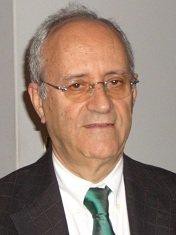resumo
The paper addresses the effect of the carbon support on the microstructure and performance of Pt-Ru-based anodes for direct methanol fuel cells (DMFC), based on the study of four electrodes with a carbon black functionalized with HNO3, a mesoporous carbon (CMK-3), a physical mixture of TiO2 and carbon black and a reference carbon thermally treated in helium atmosphere (HeTT). It is shown that CMK-3 hinders the growth of the electrocatalyst nanoparticles (2.7 nm) and improves their distribution on the support surface, whereas the oxidized surfaces of HNO3 carbon and TiO2+carbon lead to larger (4-4.5 nm), agglomerated particles, and the lowest electrochemical active areas (54 and 26 m(2) g(-1), in contrast with 90 m(2) g(-1) for CMK-3), as determined from CO stripping experiments. However, HNO3 and TiO2 are characterized by the lowest CO oxidation potential (0.4 V vs. RHE), thus suggesting higher CO tolerance for the se electrodes. Tests in DMFC configuration show that the three modified electrodes have clearly better performance than the reference HeTT. The highest power density attained with electrodes supported on carbon treated with HNO3 (65 mW cm(-2)/300 mA cm(-2) at 90 degrees C) and the equally interesting performance of the TiO2-based electrodes (53 mW cm(-2)/300 mA cm(-2)), is a strong indication of the positive effect of the presence of oxygenated groups on the methanol oxidation reaction. The results are interpreted in order to identify separate microstructural (electrocatalyst particle size, porosity) and compositional (oxygenated surface groups, presence of oxide phase) effects on the electrode performance. Copyright (C) 2012, Hydrogen Energy Publications, LLC. Published by Elsevier Ltd. All rights reserved.
palavras-chave
PARTICLE-SIZE; FUNCTIONALIZED CARBON; CATALYST SUPPORT; XRD ANALYSIS; OXIDATION; ALLOYS; ELECTROOXIDATION; PLATINUM; ACID
categoria
Chemistry; Electrochemistry; Energy & Fuels
autores
Salgado, JRC; Paganin, VA; Gonzalez, ER; Montemor, MF; Tacchini, I; Anson, A; Salvador, MA; Ferreira, P; Figueiredo, FML; Ferreira, MGS
nossos autores
Grupos
G2 - Materiais Fotónicos, Eletrónicos e Magnéticos
G3 - Materiais Eletroquímicos, Interfaces e Revestimentos
agradecimentos
The authors acknowledge Dr. Andrei Salak (UA) and Dr. Isabel Nogueira (ICEMS/IST) for performing the XRD and TEM measurements, respectively. J.R.C. Salgado acknowledges the financial support of Portuguese Foundation for Science and Technology (FCT, Science 2008) which has also partly funded this work through project HyPEM (FCT/FEDER/QREN-COMPETE PTDC/CTM-CER/109843/2009). J.R.C. Salgado and M.P. Montemor acknowledge the European Institute of Innovation and Technology, and the KIC InnoEnergy NewMat project.





